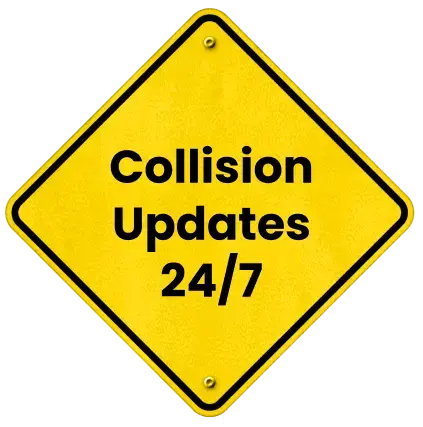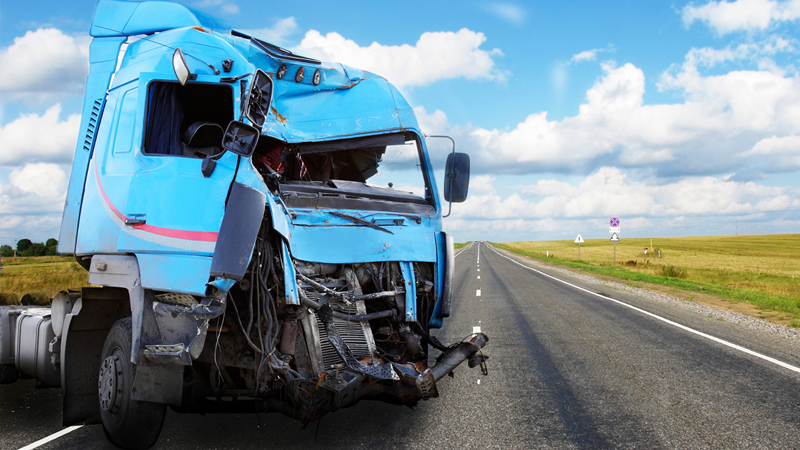
Truck Crashes on I-40: Why They’re So Common


Interstate 40 spans nearly 2,500 miles across the country, connecting Barstow, California, to Wilmington, North Carolina. As one of the nation’s major east-west corridors, I-40 is vital for commerce and freight transportation. However, this heavy use also makes it prone to serious accidents involving commercial trucks. Every day, thousands of semi-trucks and large commercial vehicles traverse this route, often sharing narrow lanes or congested urban areas with passenger vehicles. The combination of heavy freight traffic and varying driving conditions makes I-40 particularly hazardous.
Truck accidents on I-40 can be especially severe due to the size and weight of commercial vehicles, which magnify the impact of collisions and often involve multiple cars. Understanding why truck crashes happen, the regulatory environment governing commercial vehicles, and the unique liability issues on I-40 is critical for both drivers and those affected by accidents. Awareness of risk factors and proactive safety measures can make a substantial difference in preventing crashes or reducing their severity.
Factors Contributing to Semi-Truck Crashes on I-40
Truck crashes on I-40 often result from a combination of human, mechanical, and environmental factors. Driver fatigue is a major contributor, particularly for long-haul truckers covering hundreds of miles across multiple states. Despite federal hours-of-service regulations, extended trips and tight delivery schedules can lead to exhaustion, slower reaction times, and impaired judgment. Fatigue not only increases the likelihood of accidents but can also exacerbate the severity of collisions, as drowsy drivers may be less able to take evasive action or brake in time.
Vehicle maintenance is another critical factor. Semi-trucks and other commercial vehicles require rigorous upkeep; worn brakes, underinflated tires, and mechanical failures can create dangerous situations on highways with high speeds and heavy traffic. Even minor issues, like a malfunctioning turn signal or brake light, can lead to miscommunication on the road and contribute to serious crashes. Regular inspections and adherence to maintenance schedules are essential for safe commercial driving.
Weather and roadway conditions also play a significant role. In Arizona and New Mexico, sudden desert storms, high winds, and icy mountain passes can create treacherous driving conditions. In Tennessee and North Carolina, steep grades, sharp curves, and foggy conditions challenge even experienced truck drivers. Rain, snow, and ice in these areas increase stopping distances and reduce traction, which is particularly dangerous for heavy trucks that require more space to slow down or maneuver safely.
Long stretches of isolated roadway in western Oklahoma and eastern California may contribute to driver fatigue or delayed response times in emergencies. Congestion around urban centers such as Memphis, Oklahoma City, and Raleigh adds another layer of risk, increasing the potential for chain-reaction crashes involving large trucks and passenger vehicles. In these high-traffic zones, sudden stops, lane changes, and merging vehicles create a dynamic environment where minor errors can quickly escalate into serious accidents.
Certain areas of I-40 have earned reputations for higher accident rates. The stretch through the Ozark Mountains in Arkansas presents challenges with sharp curves and sudden rainstorms, while the Appalachian regions of North Carolina are notorious for fog, falling rocks, and steep grades. These geographic and environmental factors mean that both truck drivers and other motorists need to exercise extra caution in these high-risk zones. Planning trips with awareness of these challenges, monitoring weather forecasts, and allowing extra travel time can help reduce the chances of being involved in a crash.
FMCSA Regulations and Safety Compliance
The Federal Motor Carrier Safety Administration (FMCSA) regulates commercial trucking to reduce accidents and improve highway safety. Its rules cover driver hours, vehicle inspections, cargo securement, and safety equipment requirements. While adherence to FMCSA standards is designed to prevent commercial vehicle crashes on Interstate 40, violations or lapses in compliance can still occur. Noncompliance, whether intentional or accidental, can create dangerous situations that place truck drivers and other road users at risk.
Improper loading, exceeding weight limits, or skipping mandatory inspections increases the risk of accidents, particularly on busy stretches where passenger vehicles and large trucks share the road. Drivers can help reduce risk by maintaining safe following distances, adjusting speed for weather and traffic, and taking regular breaks to avoid fatigue. Proper vehicle maintenance, including brakes, tires, and lights, is essential for safe operation. Commercial drivers must also strictly comply with hours-of-service rules, logging driving and rest periods accurately.
Other motorists can stay alert to large trucks, giving extra space for lane changes, turns, and sudden stops, which are often unavoidable during long hauls or challenging driving conditions. Practicing patience and maintaining awareness of blind spots around commercial trucks can prevent minor incidents from escalating into catastrophic crashes.
Liability in I-40 Truck Crashes
Liability in semi-truck crashes on I-40 can be complex. Accidents may involve multiple parties, including the truck driver, the trucking company, cargo loaders, or vehicle manufacturers. Determining fault often requires a thorough investigation, including examining police reports, vehicle data recorders, maintenance records, and witness statements. In many cases, liability is not immediately clear, making professional guidance essential for victims seeking compensation.
Trucking companies may be held responsible if driver fatigue or mechanical failures are linked to scheduling pressures or improper maintenance. The unique nature of I-40, with its combination of rural stretches, mountainous terrain, and urban congestion, can complicate liability assessments. Professional legal support can help victims navigate insurance claims, understand their rights, and ensure proper documentation is collected for a potential lawsuit.
Victims of commercial vehicle crashes on Interstate 40 should document all damages and medical treatment, gather evidence from the scene, and seek legal advice promptly. Families traveling with children, elderly passengers, or individuals with medical needs may face additional challenges, including coordinating follow-up care and arranging temporary transportation if their vehicles are damaged or totaled.
Secure Support and Compensation After an I-40 Truck Accident
Even with careful precautions, I-40 truck accidents remain a serious concern due to the highway’s length, high commercial traffic volume, and varying road conditions. Understanding the factors that contribute to these crashes, being aware of FMCSA safety rules, and seeking professional guidance following an accident are all essential steps for reducing risk and protecting those affected.
Consulting a knowledgeable I-40 accident attorney can be invaluable, ensuring that anyone injured in a truck crash receives the support they need to navigate complex liability issues and pursue fair compensation. Legal guidance can help victims address medical expenses, lost wages, property damage, and other financial challenges while providing clarity on the claims process.
Connecting with our team of skilled accident lawyers for a free consultation ensures that all aspects of recovery, both legal and financial, are managed efficiently, giving victims and their families peace of mind. With proper support, injured individuals can focus on healing, rehabilitation, and rebuilding their lives after a serious truck accident on I-40. Seeking timely legal assistance also helps prevent missed deadlines and ensures that victims’ rights are fully protected throughout the recovery process.
